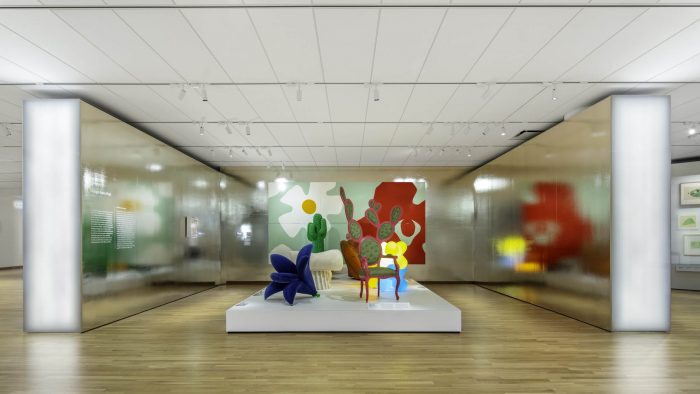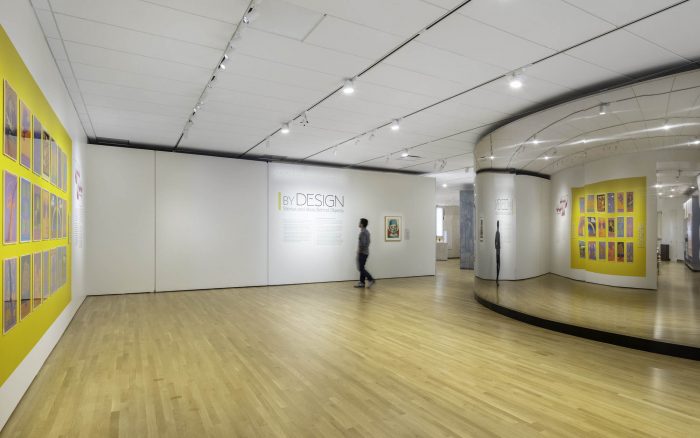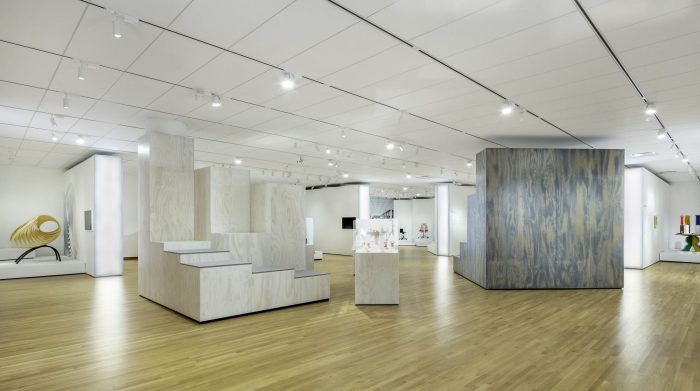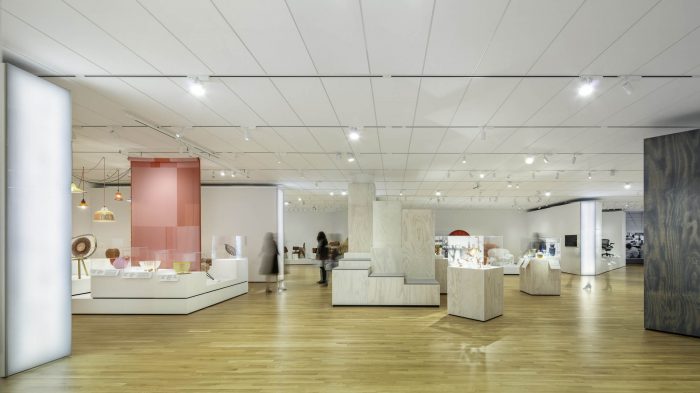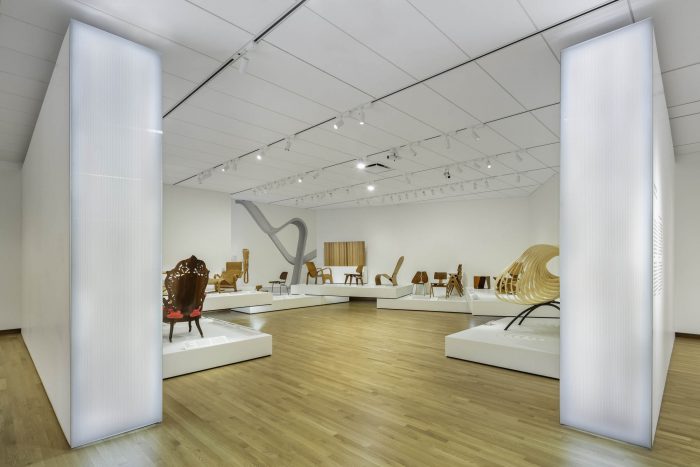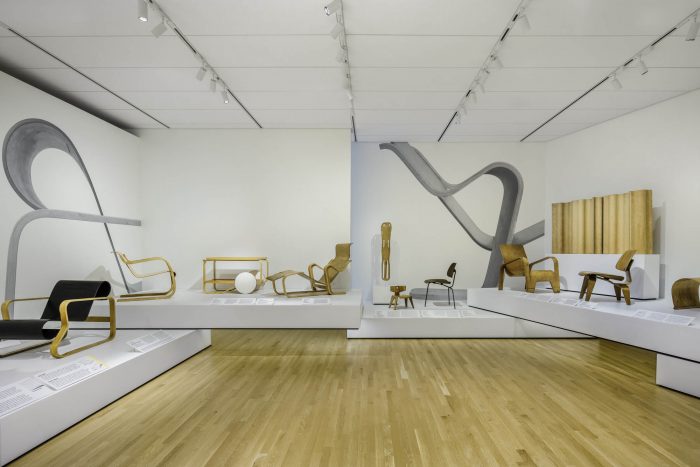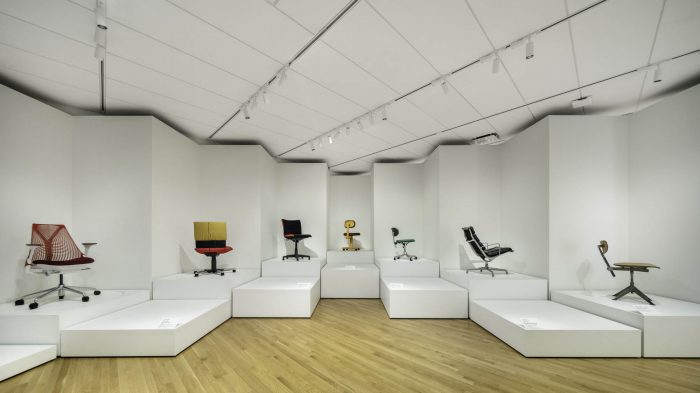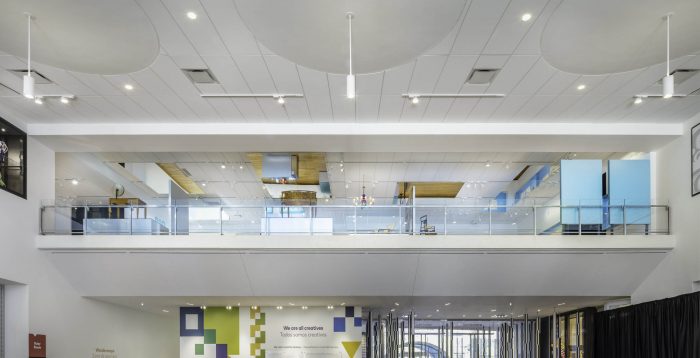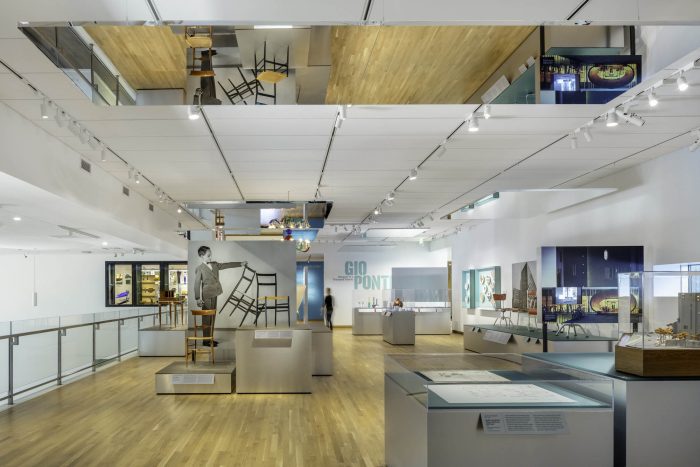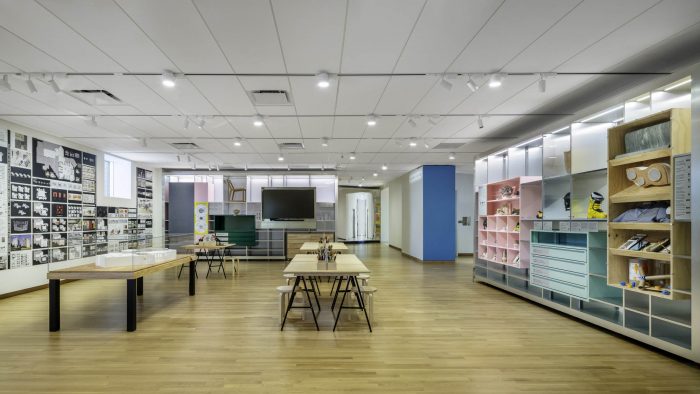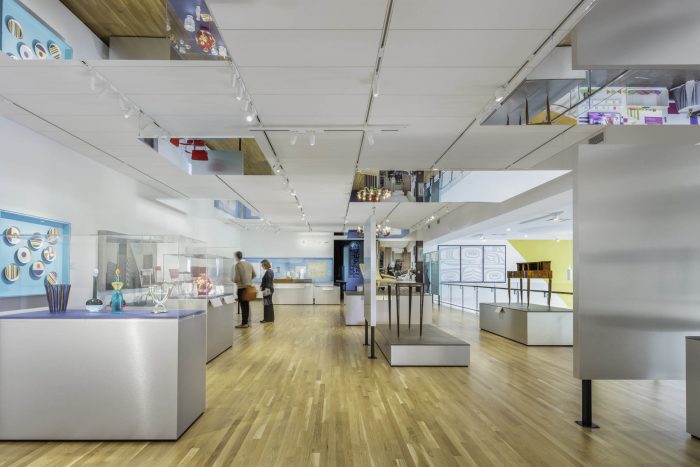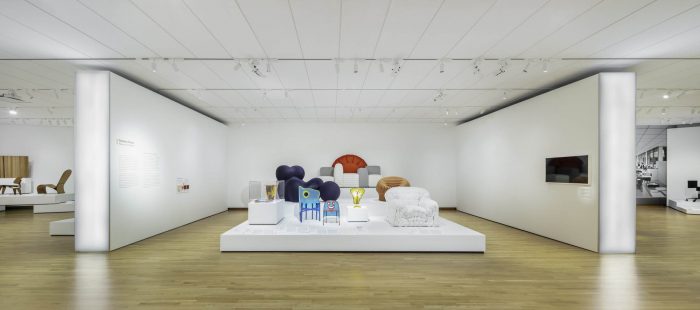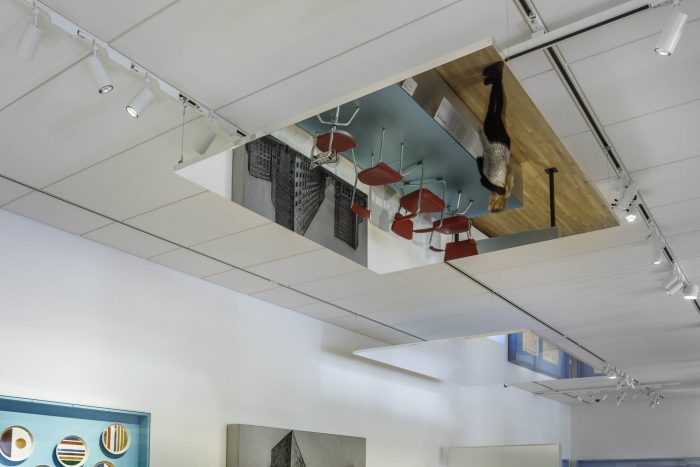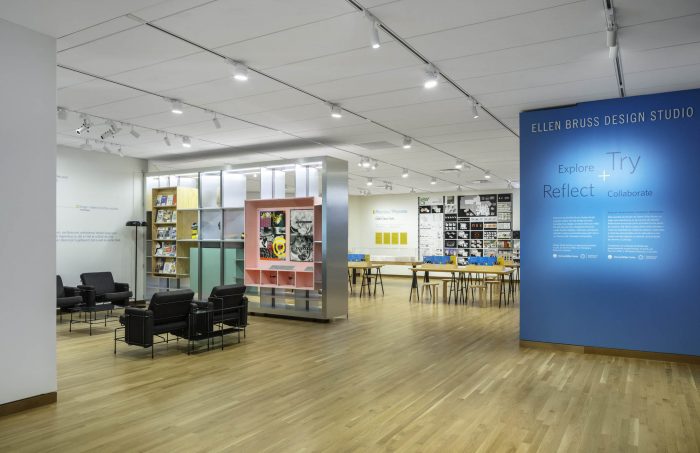丹佛艺术博物馆的建筑和设计收藏包括近19,000件从16世纪至今的作品,是美国所有综合博物馆中最杰出的现代和当代设计收藏之一,具有广泛的设计实践,包括建筑、家具、工业和平面设计。
Comprising nearly 19,000 works dating from the sixteenth century to the present day, the DAM’s architecture and design collection encompass one of the most preeminent modern and contemporary design collections of any comprehensive museum in the US, featuring a broad range of design practices, including architecture, furniture, and industrial and graphic design.
作为Machado Silvetti和Fentress建筑事务所领导的整体校园统一和建筑改造项目的一部分,丹佛艺术博物馆通过将博物馆1层原有的斯坦顿画廊水平一分为二,创建了新的设计画廊。OMA设计了两个开幕展览,分别在两个新展厅举行,展出400多件物品–《设计》。在Amanda J. Precourt设计画廊(设计画廊)举办的 “By Design: Stories and Ideas Behind Objects”,以及在Joanne Posner Mayer画廊(夹层画廊)举办的 “Gio Ponti: Designer of a Thousand Talents”。第三个空间,Ellen Bruss设计工作室(Studio)是一个灵活的互动空间,供参观者探索设计的过程,直接接触物体和材料并创造新的作品。
As part of an overall campus reunification and building renovation project led by Machado Silvetti and Fentress Architects, the Denver Art Museum has created new design galleries by horizontally bisecting the museum’s original Stanton Gallery on level 1. OMA has designed two inaugural exhibitions taking place two new galleries and featuring over 400 objects—By Design: Stories and Ideas Behind Objects in the Amanda J. Precourt Design Galleries (Design Gallery), and Gio Ponti: Designer of a Thousand Talents in the Joanne Posner Mayer Gallery (Mezzanine Gallery). A third space, the Ellen Bruss Design Studio (Studio) is a flexible and interactive space for visitors to explore design as a process, engaging directly with objects and materials and creating new works.
旋转到丹佛的原始网格,吉奥-庞蒂的马丁建筑是一个城市条件的产物。三个新房间放大了庞蒂的意图。互动式的工作室、广场式的设计画廊和地形式的夹层画廊作为不同的但又相互联系的区域,在博物馆内刺激 “城市 “活动,就像人们在城市街区中行走的经历。这些房间还对庞蒂进行了微妙的参考–夹层展厅中的抽象平面,工作室中的构图技术让人联想到庞蒂的家具设计,而在设计展厅中,一个弯曲的入口呼应了马丁大厦的俯冲曲线,而其展示平台和墙壁则根据城市网格进行旋转。
Rotated to the original grid of Denver, the Gio Ponti’s Martin building is a product of an urban condition. The three new rooms amplify Ponti’s intention. The interactive Studio, piazza-like Design Gallery, and topographic Mezzanine Gallery act as distinct yet interconnected zones to stimulate “urban” activity within the museum, like one might experience walking through city blocks. The rooms also integrate subtle references to Ponti—floating abstract planes within the Mezzanine Gallery, compositional techniques reminiscent of Ponti’s furniture design within the Studio, and in the Design Gallery, a curved entry echoes the swooping curves of the Martin Building while its display platforms and walls are rotated to the city grid.
7,750平方英尺的设计馆遵循了空间类型学的逻辑。一个开放的、中央的 “广场 “被周边的房间所包围,这些房间以房间和岛屿的交替顺序组织。在这些房间里,观众被展示的物品所包围。岛屿和码头将物体置于中心位置,允许从多个有利位置观看。一个模块化的、灵活的平台目录为展示的设计对象的类型、尺寸和媒介的内在多样性提供了便利。画廊能够通过平台的重新组合在不同的展览之间进行有效的轮换,从而使一个永久性的展览空间能够被随意地改变。
The 7,750-square-foot Design Gallery follows a logic of spatial typologies. An open, central “piazza” is surrounded by perimeter rooms organized in an alternating sequence of rooms and islands. Within the rooms, the viewer is surrounded by the displayed objects. Islands and piers place objects centrally, allowing views from multiple vantage points. A modular and flexible catalog of platforms facilitates the inherent diversity of types, sizes, and mediums of design objects on display. The gallery is capable of being efficiently rotated between different exhibitions through reaggregations of platforms, allowing a permanent exhibition space to be transformed at will.
1,900平方英尺的夹层画廊借鉴了庞蒂对漂浮的抽象平面的使用,来划分画廊和策展。展示结构、平台和标牌让人联想到庞蒂作品中对体积变化的使用。物品在合理的边界内被提升和降低到不同的高度,创造出不同层次的视角。在天花板上,镜面增加了另一层水平平面,反映了装置和走过它的人的时刻。
The 1,900-square-foot Mezzanine Gallery draws from Ponti’s use of floating abstract planes to zone the gallery and curation. Display structures, platforms, and signage are reminiscent of the use of shifted volumes in Ponti’s work. Objects are raised and lowered to different heights within logical boundaries creating layers of perspectives. On the ceiling, mirrored surfaces add another layer of horizontal planes that reflect moments of the installation and the people walking through it.
设计工作室响应了吸收信息的新方式,并通过亲身体验使展出的艺术作品有了背景。一系列的铰链墙可以被部署成流动的配置,用于一系列的项目,如图书馆、休息室、研讨会、演讲和其他面向社区的活动。工作室墙采用了庞蒂的构图技术,如局部平面,以组织和聚焦各种展示和活动。
The Design Studio responds to new ways of absorbing information and contextualizes artworks on view through hands-on experiences. A series of hinged walls can be deployed into fluid configurations for a range of programs such as libraries, lounges, workshops, presentations, and other community-oriented activities. Workshop walls employ Ponti’s compositional techniques such as partial planes to organize and spotlight various displays and activities.
Architects: OMA
Area: 1069 m²
Year: 2021
Photographs: James Florio
Partner In Charge:Shohei Shigematsu
Associate :Christy Cheng
Project Architect:Daniel Rauchwerger
Team:Philippe Audemard d’Alancon, Marie-Claude Fares, Olivia Haynie, Shary Tawil, Thuy-Trang Trinh, Andres Villar
Denver Art Museum Curator :Darrin Alfred
Denver Art Museum Curatorial Assistant:Jessica Boven
Senior Interpretive Specialist:Ann Lambson
Director Of Exhibitions, Strategy And Gallery Design:Jill Desmond
Graphic Design:McGinty Co.
Design Studio Walls, Adg Plywood Platforms:Cinnabar
Mezzanine Gallery Casework And Panels:Astound
City:Denver
Country:United States


